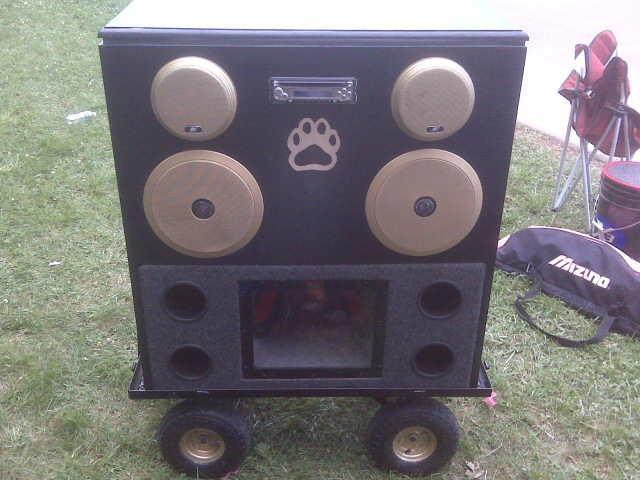Question Boom Box
Boom Box
QUESTION: Hey Brian,
I was woundering if you were able to answer my question about possible battery current issues with my stand alone unit. Sent earlier today.
ANSWER: Hi Jeff,
I think I'd just started typing my reply when you sent this. Your answer should be waiting for you; hope it's helpful!
Brian
---------- FOLLOW-UP ----------
QUESTION: Sorry to bother you again,
i can't find the answer. All I got was the above reply. Looking forward to the solution. Again I appreciate your time!
AnswerJeff,
I'm not sure what happened there, but here's a copy of my original answer:
Actually, while it's possible that your problem is caused by a low voltage condition from the battery, I think it's more likely that the problem is in the subwoofer setup. A car battery should be easily capable of providing enough current for a 600-watt amplifier.
I can't really tell what kind of subs you have there, but they look like they might be Sony Xplod's. In this case, they're probably a 4-ohm, single voice coil design. You said that you're bridging two channels of your Sony amplifier to run the subs. When you bridge the amplifier, you need to use a minimum load impedance of 4 ohms. If you have both 4-ohm subwoofers connected to the bridged amp terminals, then the impedance load at the amp is 2 ohms. This will easily trigger a "protect" mode on a Sony amp when you turn the volume up; it's called an over-current protection.
It looks like your other four speakers (mids and highs) are connected to the remaining two amplifier channels. If they're also 4-ohm speakers, then the impedance load on those channels will each be 2 ohms as well; but this shouldn't be a problem because you aren't bridging those channels.
You can try re-wiring the subs so they're connected in series, not parallel. To do this, connect the positive wire from sub #1 to the positive "bridged" terminal at the amp. Connect the negative wire from sub #1 to the positive wire from sub #2. Then connect the negative wire from sub #2 to the negative "bridged" terminal at the amplifier. This will result in an 8-ohm load instead of a 2-ohm load; the amplifier's power output will be reduced, but it should be able to run this safely. Your other option is to replace your 4-ohm subs with 8-ohm subs; these are available, but much less common.
I'm doubtful that the problem is caused by low voltage, because this condition will usually just cause the amp to shut off, rather than triggering a "protect" light. However, you can check this pretty easily with a digital multimeter; just measure the voltage at the amp's power and ground terminals while the system is playing. I'd expect the voltage to stay up above 11 volts. Whenever you draw current from a battery, you'll get a certain amount of voltage drop, due to internal resistance in the battery itself, as well as resistance in the terminal connections and wiring. If the battery's in good condition, and all the connections are clean and tight, I wouldn't expect the voltage drop to be severe enough to shut down the amp.
Note that a standard automotive battery isn't designed to be fully discharged; if you drain the battery, it will be damaged--the battery's internal resistance will increase, resulting in a greater level of voltage drop. Eventually the battery won't be able to run the system effectively, even when fully charged. For your application, you'd want to use a deep-cycle (marine) battery, not a standard automotive starter battery.
Hope this helps!
Brian
